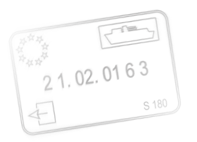From the first recorded settlement in 1664 to 1785 the present town of Easthampton was included in the boundaries of Northampton, with one exception, in 1741, when a portion was transferred to Southampton. The early histories of Hampshire County are sufficiently definite so that many of the events which occurred can be identified as having taken place in Easthampton.
The first settler in Easthampton was John Webb, one of the signers of the planters' agreement for Northampton. On December 13, 1664 he was granted a piece of land at Pascommuck-now the village of Mt. Tom, upon which to build a house, although it is possible he had resided in the section earlier. The location was given as… “on a little rise of ground near the bank of the river, at the westernmost bend of the "old bed." This would be near the intersection of the present Clapp Street and Fort Hill Road.
Water power was of great importance and any convenient site was
utilized as soon as possible. In Easthampton, the Manhan River and Broad Brook, with their tributaries, offered a number of sites which still have their influence upon the town. In 1664 David Wilton, Medad Pomeroy, and Joseph Taylor were granted permission to establish a saw mill on Saw-Mill Brook, now Bassetts Brook, a little above West Street.
In 1685 Joseph Parsons and others, were voted "liberty to make a cart bridge over the mouth of the Manhan River, provided they damnify no man's property." This bridge was near Webb's log cabin.
Between 1686 and 1705 a grist mill was erected by Samuel Bartlett for the purpose of grinding corn and wheat. This mill was also located on the Falls of the Manhan, near the site of the dam now owned by the town. Despite the early presence of these two important colonial industries, no settlement of any verifiable nature occurred in Easthampton until c, 1700, when five families established themselves in the area known as Pascommuck. The 1831 map of Northampton, clearly shows the area as bordering between the Oxbow and the base of Mt. Tom along East Street. An estimated nineteen people living in that fortified area were killed when it was attacked by Indians in 1704. The village was abandoned for a period of approximately ten years, before resettlement occurred.
Settlement was invariably contingent on land availability, and thus a brief discussion of the land grant system is in order. The Northampton men who had initially settled the town or were otherwise allowed were known as proprietors. Proprietors controlled all of the land in the community, as a body corporate. When there was a need for granting additional land to individuals, they would call a meeting and distribute land, usually based upon one's age, wealth, and status. The Northampton proprietors apparently divided up Easthampton into a number of so-called divisions: a section consisting of the old center of Northampton had a strip of land extending to the Manhan Falls and was the "Inner Commons", the vicinity east of Florence and Northampton roads was called Watefield Division, that east of it referred to as the Old Lovefield Division, everything south of Ferry street called the Mountain Division, while the western third was the Long Division.
The Inner Commons was undoubtedly granted first, since it included the two previously mentioned mill sites. The Old Lovefield Division was apparently divided up second, thus explaining for the early settlement at Pascommuck, with the other divisions subdivided to individual proprietors subsequent.











